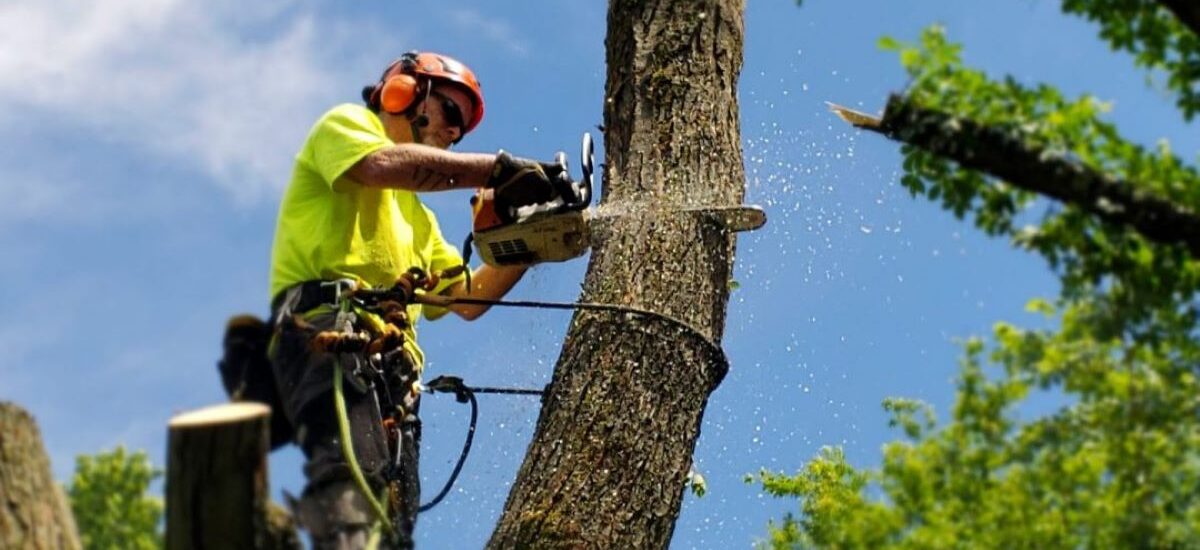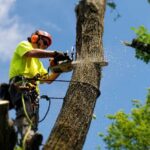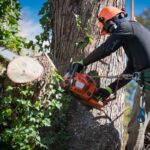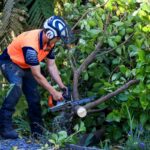Fruit tree pruning involves the selective removal of branches to improve tree structure, health, and fruit production. This ancient practice shapes growth patterns, increases air circulation, and directs energy toward producing quality fruit rather than excessive foliage. When applied to heritage varieties, pruning becomes a vital tool for maintaining genetic diversity and preserving centuries-old cultivars that might otherwise disappear.
Community orchards have emerged as powerful vehicles for community food heritage preservation. These shared green spaces bring neighbours together to cultivate fruit trees—particularly heirloom varieties—whilst providing free access to fresh, organic produce. Searching for “fruit tree pruning near me” often leads to local community orchard projects where volunteers learn traditional techniques passed down through generations.
These initiatives transform neglected urban spaces into thriving food forests. They create living libraries of heritage fruit varieties, teach sustainable agriculture practices, and ensure that rare apple, pear, and plum cultivars continue feeding future generations.

What Is the Role of Fruit Tree Pruning in Preserving Food Heritage?
Proper pruning directly safeguards heritage fruit varieties by maintaining tree vitality and ensuring consistent, high-quality harvests that keep rare cultivars in production. Without regular pruning, heirloom trees become susceptible to disease, produce inferior fruit, and eventually decline—erasing centuries of agricultural history.
The maintenance of heritage fruit varieties relies on skilled pruning techniques that differ from modern commercial approaches. Old apple, pear, and plum cultivars often require gentler shaping to preserve their natural growth patterns whilst removing deadwood and crossing branches. These heritage trees can live for decades when properly maintained, creating living archives of regional food culture that would otherwise disappear.
The fruit tree pruning benefits extend beyond individual tree health to support entire community food systems:
- Disease prevention: Removing infected branches stops pathogens from spreading through heritage orchards
- Improved air circulation: Open canopies reduce fungal issues common in older varieties
- Enhanced fruit size and flavour: Directing energy to fewer branches produces superior quality fruit
- Extended harvest seasons: Proper pruning encourages consistent annual bearing rather than biennial cycles
Sustainable food sources emerge when communities master pruning practices for their local heritage varieties. A well-pruned orchard produces abundant fruit without chemical interventions, as healthy trees naturally resist pests and diseases. This creates reliable harvests that reduce dependence on imported produce whilst maintaining genetic diversity in the food supply.
Pruning also determines whether heritage varieties remain viable for future generations. Neglected trees quickly become unproductive, leading communities to replace them with modern cultivars. Regular pruning keeps these irreplaceable varieties thriving, ensuring that unique flavours and climate-adapted characteristics continue serving local food needs. The knowledge transfer involved in teaching proper pruning techniques becomes as valuable as the trees themselves, embedding food heritage preservation into community practice.
For example, initiatives like granting support for heritage apples not only help maintain these precious varieties but also promote sustainable practices within local communities. Furthermore, understanding the nuances of growing fruit trees on non-traditional farms can open up new avenues for preserving our food heritage while diversifying agricultural practices.
How Do Community Orchards Contribute to Food Heritage Preservation?
Community orchards are public spaces where volunteers grow fruit trees, specifically heritage varieties, for the benefit of local residents. These initiatives turn unused urban land into productive green areas that protect rare fruit types while also providing fresh, organic produce to nearby communities.
Core Objectives of Community Orchards
The main goal of community orchards is to conserve heritage fruit varieties through active cultivation instead of simply preserving them in a museum-like manner. These orchards maintain living collections of heirloom fruit trees that might otherwise vanish from commercial farming. They serve as genetic reserves where traditional apple, pear, plum, and cherry varieties can thrive with proper care and pruning.
1. Heritage Variety Conservation
Community orchards focus on actively growing and nurturing heritage fruit varieties instead of keeping them in static preservation.
2. Genetic Repositories
These orchards act as storage places for the genetic material of heirloom fruit trees, ensuring their survival and continuation.
3. Commercial Production Alternatives
By maintaining living collections of unique fruit varieties, community orchards offer alternatives to mainstream commercial production practices that often prioritise uniformity over diversity.
Democratising Access to Fresh Produce
Publicly accessible fruit-growing spaces remove financial obstacles to consuming organic fruits. Residents can freely pick seasonal produce, addressing food insecurity in urban areas where lower-income families may struggle to afford fresh fruits. This shared harvest approach ensures that the fruits are enjoyed by people rather than left to rot on the trees.
1. Free Harvesting Opportunities
Community members have the opportunity to harvest fruits without any cost or payment involved.
2. Addressing Food Insecurity
These initiatives directly tackle issues related to food insecurity by providing access to fresh and nutritious produce.
3. Preventing Food Waste
By encouraging local residents to participate in harvesting activities, community orchards help prevent potential waste of harvested fruits.
Heritage Varieties in Practice
The Welland Community Orchard in Victoria serves as an example of successful conservation efforts for heritage apple varieties, boasting over 100 different types including some that are centuries old. Each specific cultivar carries its own narrative regarding how it adapted regionally and what taste preferences were popular historically.
In Toronto’s Ben Nobleman Park Community Orchard, neglected urban spaces have been transformed into vibrant repositories of food history thanks to dedicated volunteers who put in their time and effort towards revitalising these areas.
These projects actively document important details about each variety such as flavour profiles (how they taste), disease resistance capabilities (how well they withstand diseases), and harvest timing (when they are typically harvested). Such documentation creates valuable resources for future growers looking to cultivate similar crops or maintain existing ones.
Workshops on grafting techniques allow participants—whether experienced farmers or enthusiastic amateurs—to propagate rare varieties through budding or grafting methods thereby enabling them spread heritage genetics beyond single locations where they originated from.
The hands-on approach ensures that knowledge about traditional cultivation practices gets passed down from one generation onto another while also ensuring that older trees remain productive due skilled pruning techniques employed by those who work with them regularly.
Community orchards demonstrate that preserving food heritage requires active involvement rather than passive safeguarding creating resilient networks comprised various stakeholders such growers committed maintaining genetic diversity within agricultural systems
What Are the Key Steps in Establishing a Successful Community Fruit Tree Project?
Successful community orchards begin with thorough site preparation for orchards that examines soil composition, sunlight exposure, and water access. Poor site assessment leads to struggling trees that produce inferior fruit and become vulnerable to disease. Communities must conduct soil drainage research to identify areas prone to waterlogging, which causes root rot in fruit trees and undermines long-term orchard viability.
Testing soil pH levels determines which amendments create optimal growing conditions for specific fruit varieties. Clay-heavy soils require organic matter incorporation to improve drainage, whilst sandy soils need compost additions to retain moisture. Slope analysis prevents water pooling around tree roots during heavy rainfall.
Variety selection for orchards demands matching heritage cultivars to local climate zones and microclimates. A heritage apple variety thriving in coastal Victoria may fail in Toronto’s harsher winters. Communities research which heirloom varieties historically grew in their region, consulting agricultural archives and local horticultural societies. This approach preserves authentic food heritage whilst ensuring tree survival.
The selection process considers:
- Chill hour requirements for proper fruit development
- Disease resistance specific to local pathogens
- Pollination compatibility between varieties
- Harvest timing to extend seasonal availability
- Cultural significance to the community’s history
Planning ongoing care structures prevents orchards from becoming neglected liabilities. Communities establish maintenance schedules covering fruit tree pruning near me services, pest monitoring protocols, and disease prevention strategies. Regular pruning maintains tree structure, improves air circulation that reduces fungal infections, and directs energy toward quality fruit production rather than excessive vegetative growth.
Integrated pest management plans identify common local threats before they devastate young orchards. Volunteer training programmes ensure consistent care knowledge transfers between generations of orchard stewards. Budget allocation for tools, mulch, and organic treatments sustains healthy trees that produce abundant heritage fruit for decades.
How Do Communities Engage Volunteers in Orchard Stewardship and Education?
Do community orchards rely on volunteer participation? Yes, volunteer stewardship forms the backbone of most community orchard projects, with participants taking on hands-on roles in pruning, mulching, watering, and seasonal maintenance tasks. These volunteers learn practical skills whilst directly contributing to heritage fruit tree preservation.
Regular volunteer days typically occur monthly or seasonally, allowing participants to engage with specific orchard management activities. Pruning sessions during dormant winter months teach proper cutting techniques that maintain tree structure and encourage productive growth. Spring activities focus on mulching, pest monitoring, and ensuring adequate pollinator habitat through wildflower planting around fruit trees.
Educational Workshops Build Essential Skills
What training opportunities do community orchards provide? Educational workshops cover specialised techniques including grafting heritage varieties, understanding soil science, identifying common tree diseases, and creating pollinator-friendly environments. These sessions transform casual volunteers into knowledgeable stewards capable of independent orchard care.
Grafting workshops prove particularly valuable for urban agriculture education, teaching participants how to propagate rare heritage varieties and maintain genetic diversity. Attendees learn to:
- Identify appropriate rootstock for local conditions
- Execute whip-and-tongue grafts for fruit tree propagation
- Care for newly grafted trees during establishment
- Recognise signs of successful graft union formation
Long-Term Skill Development Ensures Orchard Sustainability
How do volunteers progress in their orchard knowledge? Structured training programmes allow participants to advance from basic maintenance tasks to complex management decisions. Experienced volunteers often lead tours, mentor newcomers, and coordinate seasonal work parties, creating a self-sustaining knowledge network.
Some projects offer certification programmes or master gardener collaborations that formalise volunteer expertise. This progression model ensures orchards maintain consistent care standards whilst building a community of skilled practitioners who understand both traditional fruit-growing methods and modern sustainable practices. Volunteer stewardship orchard programmes create lasting connections between people, heritage food systems, and local environments.
What Are Some Successful Examples of Community Orchard Projects?
Welland Community Orchard Victoria
The Welland Community Orchard Victoria stands as a remarkable testament to heritage preservation, housing over 100 heritage apple varieties on Vancouver Island. This project focuses specifically on rare and endangered apple cultivars that might otherwise disappear from cultivation. The orchard serves as a living gene bank, protecting varieties dating back centuries whilst providing educational opportunities for visitors to learn about historical fruit cultivation methods and taste apples their great-grandparents might have enjoyed.
Ben Nobleman Park Toronto orchard
Ben Nobleman Park Toronto orchard demonstrates how community dedication can revitalise neglected urban spaces. What began as an underutilised park area transformed into a thriving community hub through coordinated volunteer efforts. The site now hosts seasonal harvest festivals, educational workshops, and family-friendly events that draw hundreds of residents annually. The transformation created not just an orchard but a gathering place where neighbours connect over shared stewardship of fruit trees and collective celebration of harvests.
North American orchard initiatives
North American orchard initiatives span diverse climates and communities, each adapting heritage preservation to local conditions. Projects in Portland, Seattle, and Philadelphia train volunteers in specialised pruning techniques suited to their regional growing conditions. These programmes typically run structured training sessions covering dormant season pruning, summer maintenance, and disease prevention strategies specific to local pest pressures.
Many successful projects share common elements:
- Dedicated volunteer coordinators who organise regular work parties and maintain consistent care schedules
- Partnership networks connecting orchards with agricultural extension services and master gardener programmes
- Documentation systems tracking variety performance, pruning schedules, and harvest yields
- Public engagement events that build community investment and attract new volunteers
These established orchards provide blueprints for emerging projects, demonstrating that sustained community involvement paired with horticultural expertise creates resilient food heritage preservation sites.
How Do Community Orchards Foster Social and Environmental Benefits?
Community orchards create powerful social connections by bringing neighbours together through shared harvesting days, seasonal festivals, and regular maintenance activities. These spaces transform from simple fruit-growing sites into vibrant community hubs where residents of all ages learn together, celebrate harvests, and build lasting relationships through hands-on stewardship.
Community building through orchards
Community building through orchards manifests in multiple ways:
- Monthly volunteer workdays where neighbours prune, mulch, and care for trees side by side
- Harvest festivals celebrating local food culture and heritage varieties
- Intergenerational knowledge transfer as experienced gardeners mentor newcomers
- Shared decision-making about orchard management and variety selection
The urban sustainability food access impact proves particularly significant in underserved neighbourhoods. Community orchards provide free, fresh organic fruit to residents who might otherwise struggle to afford quality produce. Projects deliberately target areas classified as food deserts, where supermarkets offering fresh fruit remain scarce or prohibitively expensive.
The environmental impact community orchards generate extends beyond food production. These green spaces create crucial habitat for pollinators including native bees, butterflies, and beneficial insects. Urban fruit trees improve air quality, reduce heat island effects, and manage stormwater runoff through their root systems. Heritage varieties preserved in these settings maintain genetic diversity often lost in commercial agriculture.
Orchards also serve as outdoor classrooms teaching sustainable practices. Participants learn composting, organic pest management, and water conservation techniques applicable to home gardens. This practical education ripples outward as volunteers implement learned practices in their own spaces, multiplying the environmental benefits throughout neighbourhoods. The combination of ecological restoration and food production makes community orchards powerful tools for urban resilience.
What Are the Best Practices for Harvesting and Maintaining Community Orchards?
Responsible Harvesting
Responsible harvesting protects tree health by following simple guidelines that prevent damage to branches and future fruiting wood. Community members should:
- Twist fruit gently upward rather than pulling downward
- Avoid climbing trees or shaking limbs
- Harvest only ripe fruit whilst leaving developing specimens for later collection
Most community orchards establish designated harvest windows and quantity limits per household to ensure equitable distribution amongst all participants.
Seasonal Maintenance Tasks
Essential maintenance tasks follow seasonal rhythms:
- Winter pruning: removes dead, diseased, or crossing branches between December and March when trees are dormant
- Spring mulching: applies organic matter around the base whilst keeping material away from trunk bark
- Summer monitoring: checks for pest activity, water stress, and developing fruit load
- Autumn soil testing: assesses nutrient levels and pH balance for amendment planning
Regular pruning schedules maintain tree structure and encourage productive fruiting wood. Young trees require formative pruning to establish strong scaffold branches, whilst mature specimens need annual thinning to improve air circulation and light penetration. Proper pruning cuts heal quickly and reduce entry points for pathogens.
Integrated Pest and Disease Management
Pest and disease prevention in orchards relies on integrated management rather than chemical interventions. Some strategies include:
- Removing fallen fruit eliminates breeding grounds for codling moths and apple maggots
- Maintaining diverse plantings attracts beneficial insects that prey on harmful species
- Companion planting with alliums, herbs, and flowers creates natural pest barriers whilst supporting pollinator populations
For more comprehensive strategies, consider exploring Integrated Pest Management (IPM), which emphasizes sustainable practices.
Disease management strategies include:
- Selecting disease-resistant heritage varieties suited to local conditions
- Ensuring adequate spacing between trees for air movement
- Sanitising pruning tools between cuts to prevent pathogen spread
- Removing infected plant material promptly and disposing away from the orchard site
Soil Care Practices
Soil care practices build long-term orchard health through annual compost applications, cover cropping between tree rows, and avoiding soil compaction in root zones. Testing soil every three years identifies deficiencies before they impact fruit quality or tree vigour.

Conclusion
Community orchards are like living libraries that hold the knowledge of flavours, traditions, and ecological wisdom. When you search for “fruit tree pruning near me,” you’re not just finding tree care services—you’re discovering opportunities to preserve food heritage communities through fruit tree pruning initiatives that connect the past with the future.
Your involvement is important. Whether you spend two hours a month attending pruning workshops or simply join in on harvest festivals, you are strengthening the network that keeps heritage varieties alive. Local orchards require volunteers who can learn grafting techniques, community members who will share traditional recipes using heirloom fruits, and advocates who will raise awareness about these edible landscapes.
Want to make a difference? Get in touch with your nearest community orchard project today. Many of them offer beginner-friendly volunteer sessions where experienced stewards teach proper pruning methods while sharing stories about each heritage variety. Your hands can help shape trees that will nourish neighbours for generations to come, preserving flavours that commercial agriculture has overlooked. The tools are ready, the community welcomes you, and the trees are in need of your care.
Click here: Tree Stump Removal and Community Memory in Urban Green Spaces






